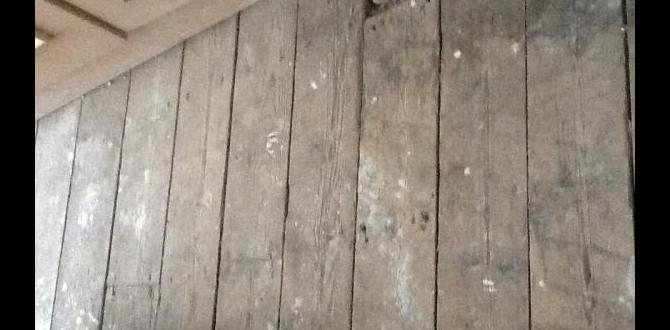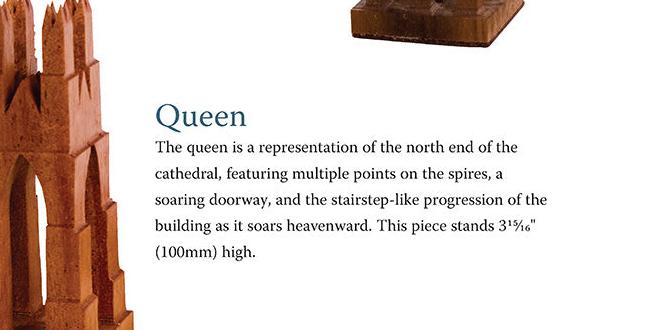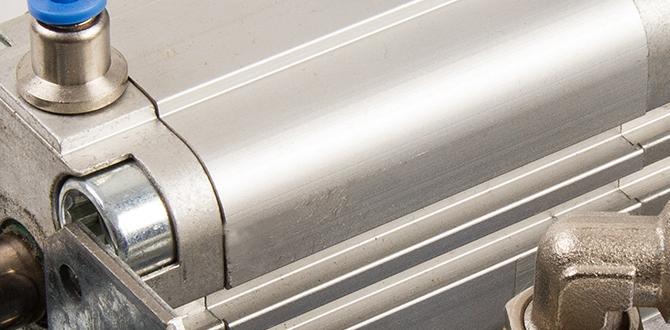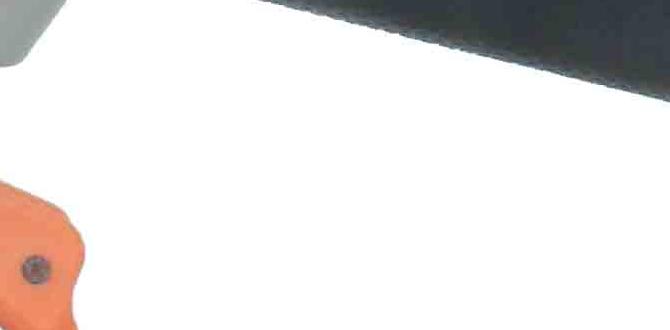Have you ever wondered what really goes into installing engineered wood flooring? Many people think it’s just about picking the right planks. But there’s so much more to it! The secret to a beautiful floor starts with proper subfloor prep.
Imagine you just bought the most stunning engineered wood flooring. You can already picture how great it will look in your living room. But if the subfloor isn’t ready, your dream floor could turn into a nightmare.
In this article, we will dive into the essential steps for prepping your subfloor. You’ll learn why these steps matter. Plus, we’ll share tips to make the installation smooth and successful.
So, are you ready to transform your space? Let’s get started on the path to a perfect floor!
Table of Contents
Engineered Wood Flooring Subfloor Prep: Essential Steps For Success Engineered Wood Flooring Is A Popular Choice For Homeowners Seeking A Blend Of Aesthetics And Durability. However, The Success Of Your Flooring Installation Largely Depends On Proper Subfloor Preparation. Below, We Will Explore The Essential Steps For Prepping Your Subfloor Before Installing Engineered Wood Flooring. Understanding Your Subfloor Before Diving Into The Prep Process, It’S Crucial To Understand The Type Of Subfloor You Are Working With. The Most Common Subfloor Materials Include Plywood, Oriented Strand Board (Osb), And Concrete. Each Type Has Specific Requirements And Considerations That You’Ll Need To Account For During Preparation. Inspecting The Subfloor The First Step In Subfloor Prep Is To Inspect The Existing Surface. Look For Any Signs Of Damage Such As Cracks, Warping, Or Moisture Issues. A Well-Prepared Subfloor Should Be Structurally Sound, Clean, And Dry. Taking The Time To Address Any Issues At This Stage Will Save You From Problems Down The Road. Cleaning And Leveling Once You’Ve Inspected Your Subfloor, The Next Step Is To Clean It Thoroughly. Remove All Debris, Dust, And Previous Flooring Materials. After Cleaning, Ensure That The Subfloor Is Level. You Can Use A Leveling Compound To Fill In Low Spots And Create An Even Surface. A Level Subfloor Is Essential For The Longevity Of Your Engineered Wood Flooring. Addressing Moisture Concerns Moisture Can Severely Impact Engineered Wood Flooring. It’S Vital To Check For Any Moisture Issues Before Installation. If Moisture Levels Are Too High, Consider Using A Moisture Barrier To Prevent Damage. This Step Is Particularly Crucial For Concrete Subfloors, Which Are More Susceptible To Moisture. Installing Underlayment In Many Cases, Installing An Underlayment Is Recommended Before Laying Down Your Engineered Wood Flooring. Underlayment Serves Multiple Purposes: It Provides Cushioning, Reduces Noise, And Often Helps With Moisture Control. Choose An Underlayment Suitable For Your Specific Flooring Type And The Conditions Of Your Subfloor. Final Checks Before Installation After Completing The Prep Work, Do A Final Inspection Of The Subfloor And Underlayment. Ensure Everything Is Clean, Dry, And Level, And Check For Any Last-Minute Issues. Taking The Time To Do A Thorough Check Will Ensure A Successful Installation Of Your Engineered Wood Flooring. Conclusion Effective Subfloor Preparation Is A Crucial Step In The Installation Of Engineered Wood Flooring. By Understanding Your Subfloor, Addressing Moisture Issues, And Ensuring A Clean, Level Surface, You Can Set The Stage For A Beautiful And Durable Flooring Solution. Take The Time To Follow These Steps, And Your Engineered Wood Flooring Will Provide Lasting Beauty And Functionality For Years To Come.

Engineered Wood Flooring Subfloor Prep
Preparing your subfloor is crucial for engineered wood flooring. A clean, dry, and level surface ensures the best results. Did you know that even small imperfections in the subfloor can lead to major issues later? Start by removing old flooring and debris. Check for moisture, and ensure the subfloor is solid. Remember, proper preparation can increase the lifespan and beauty of your new flooring! With the right prep, your floors will look fantastic for years to come.Understanding Engineered Wood Flooring
Definition and benefits of engineered wood flooring. Comparison with solid wood flooring.Engineered wood flooring is like the superhero of the flooring world. It’s made with layers of wood, making it strong and stylish. One of its biggest perks is that it stands up well to humidity, so you won’t end up with floors that look like they’re having a bad hair day!
When you compare engineered wood with solid wood flooring, you see some key differences. Solid wood can warp in wet conditions, while engineered wood doesn’t throw a tantrum when it gets damp. Also, engineered wood is often cheaper and easier to install. So, if you want floors that are beautiful and low-maintenance, engineered wood is your best buddy!
| Feature | Engineered Wood | Solid Wood |
|---|---|---|
| Durability | High | Medium |
| Cost | Less expensive | More expensive |
| Installation | Easy | Hard |
| Humidity Resistance | Great | Poor |
So, when it comes to flooring, think of engineered wood as the cool kid who can hang out in any room without drama!
Importance of Subfloor Preparation
Role of subfloor in flooring longevity. Consequences of poor preparation.Preparing the subfloor is key for a long-lasting floor. A good subfloor allows for stable and even flooring. Poor preparation can lead to many problems. Your floor might squeak or warp. In worse cases, you might need to replace it sooner than expected. Here are some points to consider:
- Longevity: A strong subfloor helps your flooring last longer.
- Cost: Fixing mistakes can be expensive.
- Safety: A well-prepped subfloor reduces slipping risks.
Why is it important to prep your subfloor?
Good preparation ensures your floor remains safe and lasts a long time. When you take the time to prep the subfloor well, you invest in your home. Your flooring won’t just look good; it will feel good too.
Tools and Materials Needed for Subfloor Prep
Essential tools for preparation (sander, level, moisture meter). Recommended materials for optimal results (underlayment, adhesives).Getting ready to install engineered wood flooring? First, gather your tool troop! You’ll need a sander to smooth out any rough patches. A level helps ensure everything is flat; nobody likes a bumpy dance floor! A moisture meter checks if your subfloor is dry because nobody wants a soggy surprise underfoot.
Now, let’s talk materials. An underlayment creates a soft cushion, making your floors feel fancy and soundproof. Don’t forget the adhesives to hold everything in place. Trust me, your floors will thank you!
| Essential Tools | Recommended Materials |
|---|---|
| Sander | Underlayment |
| Level | Adhesives |
| Moisture Meter | — |
Ready to shine? With these tools and materials, your subfloor prep will be a breeze!
Step-by-Step Guide to Subfloor Preparation
Cleaning and inspecting the existing subfloor. Repairing damages and leveling the surface.Begin by cleaning your subfloor. Remove dust, dirt, and debris. This helps the new flooring stick better. Next, inspect it for any damage. Look for cracks or holes. Repair damages using patches or fillers. Finally, level the surface. Use a leveling compound if needed. A smooth subfloor is key for a great finish!
How do I prepare a subfloor for engineered wood flooring?
Start with cleaning and inspecting the subfloor for damages. After that, repair any issues and level the entire surface. This ensures that your engineered wood flooring has a solid and even base.
Moisture Testing and Control
Methods for measuring moisture levels in the subfloor. Solutions for moisture mitigation.Did you know that moisture can be a sneaky troublemaker for your subfloor? To keep it in check, use a moisture meter to find out how damp it is. These handy tools are like tiny detectives. If the moisture is high, don’t worry! You can use dehumidifiers or moisture barriers to kick the bad stuff out. Check out the table below for quick solutions:
| Method | Description |
|---|---|
| Moisture Meter | Measures moisture levels in wood. |
| Dehumidifier | Dries out the air. |
| Moisture Barrier | Stops moisture from rising. |
Remember, keeping moisture at bay is key to a happy, healthy floor. It’s like giving your flooring a bubble bath without the rubber ducky!
Installing Underlayment
Benefits of underlayment for engineered wood flooring. Installation tips for effective underlayment.Using underlayment for engineered wood flooring has many advantages. It helps reduce noise, making your home quieter. It also adds insulation, keeping your floors warmer. Proper underlayment installation is key for the best results. Here are some tips:
- Choose the right type for your flooring.
- Make sure the surface is clean and dry.
- Use overlapping seams to prevent moisture.
- Cut pieces to fit snugly against walls.
With these steps, your floors will look and feel great!
What are the benefits of underlayment?
Underlayment improves soundproofing, insulation, and moisture protection. It creates a smooth surface and can increase the lifespan of your flooring.
Common Mistakes to Avoid in Subfloor Prep
Mistakes that can lead to flooring issues. How to identify and rectify these errors.Many people make simple mistakes while prepping their subfloor. These errors can cause big problems later. For example, not checking for moisture can lead to warped flooring. Using the wrong materials can also lead to creaky floors. Take time to identify these issues. Look for signs like uneven surfaces or damp spots. Fix these before laying down your new flooring.
What are common mistakes in subfloor prep?
Common mistakes include:
- Ignoring moisture levels
- Using improper materials
- Not leveling the floor
Address these points to ensure your flooring stays beautiful and lasts longer. You will be glad you took the extra time!
Maintenance Tips for Engineered Wood Flooring
Care guidelines to prolong the life of engineered wood flooring. Recommendations for cleaning and upkeep.Engineered wood flooring looks great and lasts a long time with proper care. Follow these simple tips to keep it in good shape:
- Always sweep or vacuum. Dust and dirt can scratch the surface.
- For spills, wipe up quickly with a damp cloth. Water can damage the flooring.
- Use a gentle cleaner made for wood. Harsh chemicals can hurt the finish.
- Place mats at doors to trap dirt before it enters.
- Keep your home at a stable temperature. Extreme heat or cold can make the floor expand or shrink.
Taking these steps will help your flooring shine for years! It’s like giving your floor a little love.
How often should I clean engineered wood flooring?
Clean it at least once a week. Regular cleaning helps remove dirt that can scratch the surface and keeps your floor looking fresh.
Conclusion
In conclusion, preparing your subfloor for engineered wood flooring is essential. Clear dirt and moisture, ensuring a flat surface. Check for squeaks and fix them to enhance durability. Use an underlayment for added comfort and insulation. Follow these steps carefully, and your flooring will look great! For more detailed tips, keep reading or check guides online. Happy flooring!FAQs
Here Are Five Related Questions On The Topic Of Engineered Wood Flooring Subfloor Prep:Before you install engineered wood flooring, you need to prep the subfloor. First, make sure the subfloor is clean and dry. Check for any bumps or holes and fix them. It’s important to have a flat surface so your floor looks good. If the subfloor is really wet, wait until it’s dry before you start.
Of course! Please share the question you’d like me to answer, and I’ll do my best to help you.
What Are The Key Characteristics Of A Suitable Subfloor For Installing Engineered Wood Flooring?A good subfloor for engineered wood flooring is flat and even. It should also be dry, so there’s no water damage. You want it to be strong enough to hold the weight of the flooring. Lastly, it should be clean, with no dust or debris. This helps your new floor stay nice for a long time!
How Do You Properly Clean And Level A Subfloor Before Laying Engineered Wood Flooring?First, we need to clear the subfloor of dust and debris. You can use a broom or vacuum for this. Next, check if the floor is flat. Use a long level or a straight board to find bumps or dips. If you find any, add underlayment or patch with a special filler to make it even. Finally, make sure everything is dry before laying the new flooring.
What Types Of Underlayment Are Recommended For Use With Engineered Wood Flooring, And How Should They Be Installed?You can use different types of underlayment for engineered wood flooring, like foam, cork, or rubber. Foam is the most common. It helps with sound and makes the floor softer to walk on. When you install it, lay the underlayment down on the floor first. Make sure the pieces fit together snugly. Then, place the engineered wood flooring on top of it.
Are There Specific Moisture Testing Methods That Should Be Used To Assess Subfloor Readiness For Engineered Wood Flooring Installation?Yes, there are ways to check moisture in the subfloor. You can use a moisture meter, which measures how wet the floor is. Another method is the plastic sheet test, where you put a plastic sheet on the floor for 24 hours. If you see water under the sheet, the floor is too wet for new flooring. It’s important to make sure the subfloor is dry before you install the floor!
What Repair Steps Should Be Taken If The Subfloor Has Imperfections Or Damage Before Installing Engineered Wood Flooring?First, we need to inspect the subfloor for bumps, holes, or cracks. If we find any, we can use a patching compound to fill them in. For big holes, we might need to add a piece of plywood over the damaged area. After that, we should sand the floor smooth. Finally, we check again to make sure everything is flat and ready for the new flooring.







